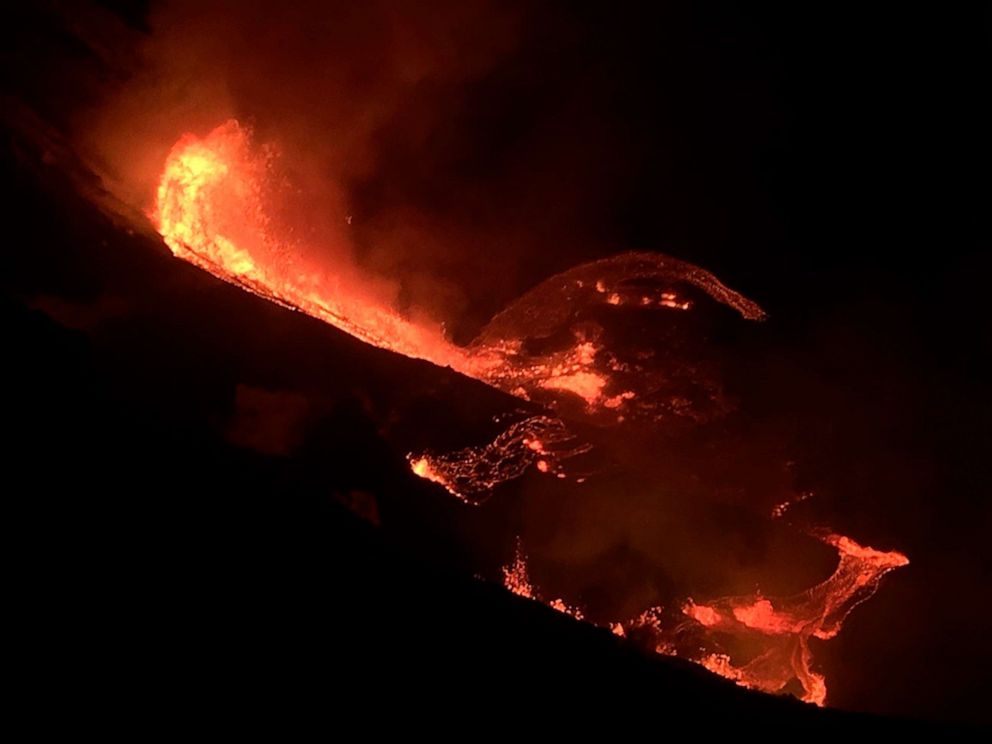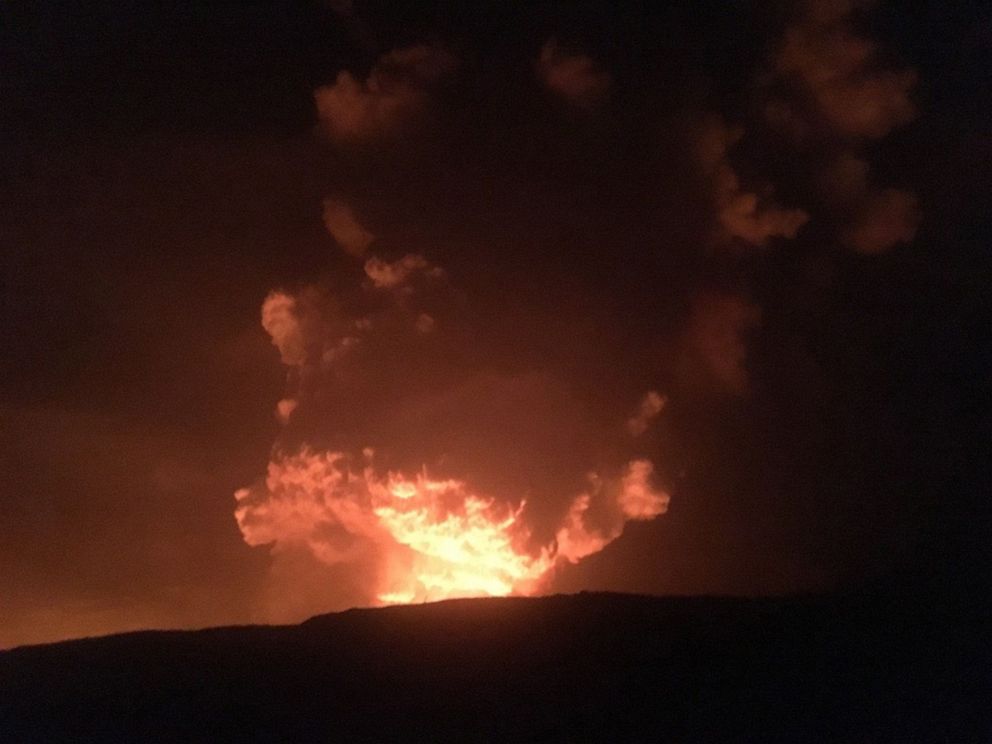Kilauea volcano erupts on Hawaii's Big Island
The situation is "rapidly evolving," the Volcanoes National Park said.
Kilauea, an active shield volcano on Hawaii's Big Island, has erupted.
The Hawai‘i Volcanoes National Park confirmed the news on Twitter, as did the Hawaiian Volcano Observatory.
In a statement Sunday night, the HVO/USGS said that shortly after 9:30 p.m. Hawaii Standard Time, "the USGS Hawaiian Volcano Observatory (HVO) detected glow within Halemaʻumaʻu crater at the summit of Kilauea Volcano. An eruption has commenced within Kilauea’s summit caldera."

They said the situation is "rapidly evolving" and they will provide more information about the eruption when they have it.
"Accordingly, HVO has elevated Kilauea’s volcano alert level to WARNING and its aviation color code to RED," they said.
Ash caused by the eruption will likely fall in the communities of Pahala, Wood Valley, Naalehu and Ocean View, NOAA's National Weather Service announced. They also warned residents to avoid excessive exposure to ash, which is an eye and respiratory irritant.
"Those with respiratory sensitivities should take extra precaution to minimize exposure," they said.
Kilauea last erupted in 2018. It is the most active of Hawaii's five volcanoes.

HVO has been monitoring changes in the volcano for some time.
They said that for the past several weeks, they recorded "ground deformation and earthquake rates at Kilauea Volcano’s summit and upper East Rift Zone that have exceeded background levels observed since the conclusion of the 2018 lower East Rift Zone eruption and summit collapse."
Starting in March 2019, they said, uplift related to post-collapse inflation of the summit reservoir has been occurring, and since September of this year, the rates have been steadily increasing. They are currently higher than they have been since the end of the 2018 eruption.
HVO said that since November, "increased earthquake rates began when seismic stations recorded an average of at least 480 shallow, small-magnitude earthquakes per week," less than 2.5 miles beneath Kilauea's summit and upper East Rift Zone.
On Dec. 2, GPS stations and tiltmeters recorded a ground deformation event at Kilauea's summit, accompanied by earthquake swarms, and on Dec. 17, seismometers detected an increase in "occurrence and duration of long-period seismic signals beneath Kilauea's summit, which are attributed to magmatic activity," HVO added.
Hawaii Volcano NPS has a live web cam of the volcano.




